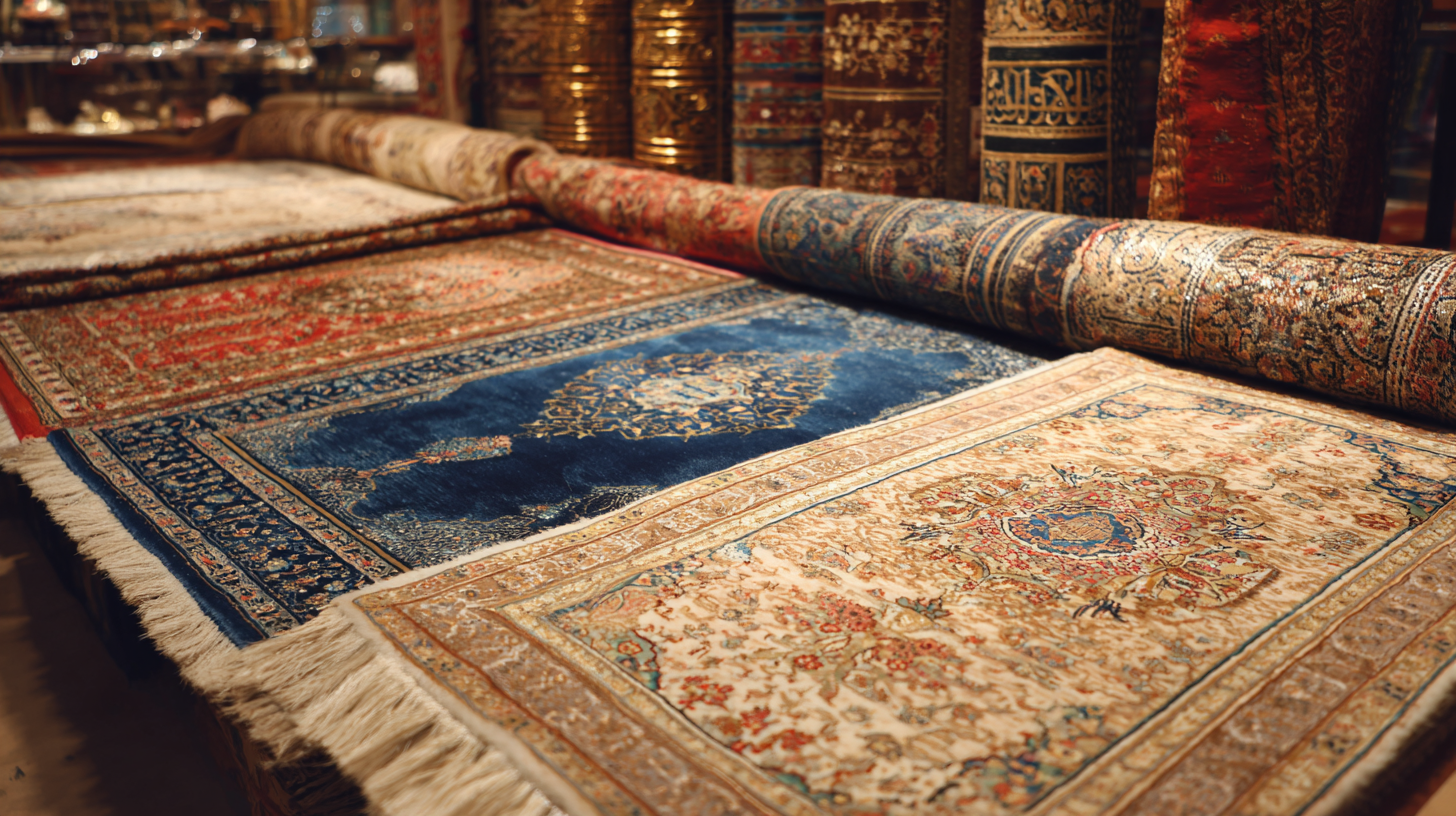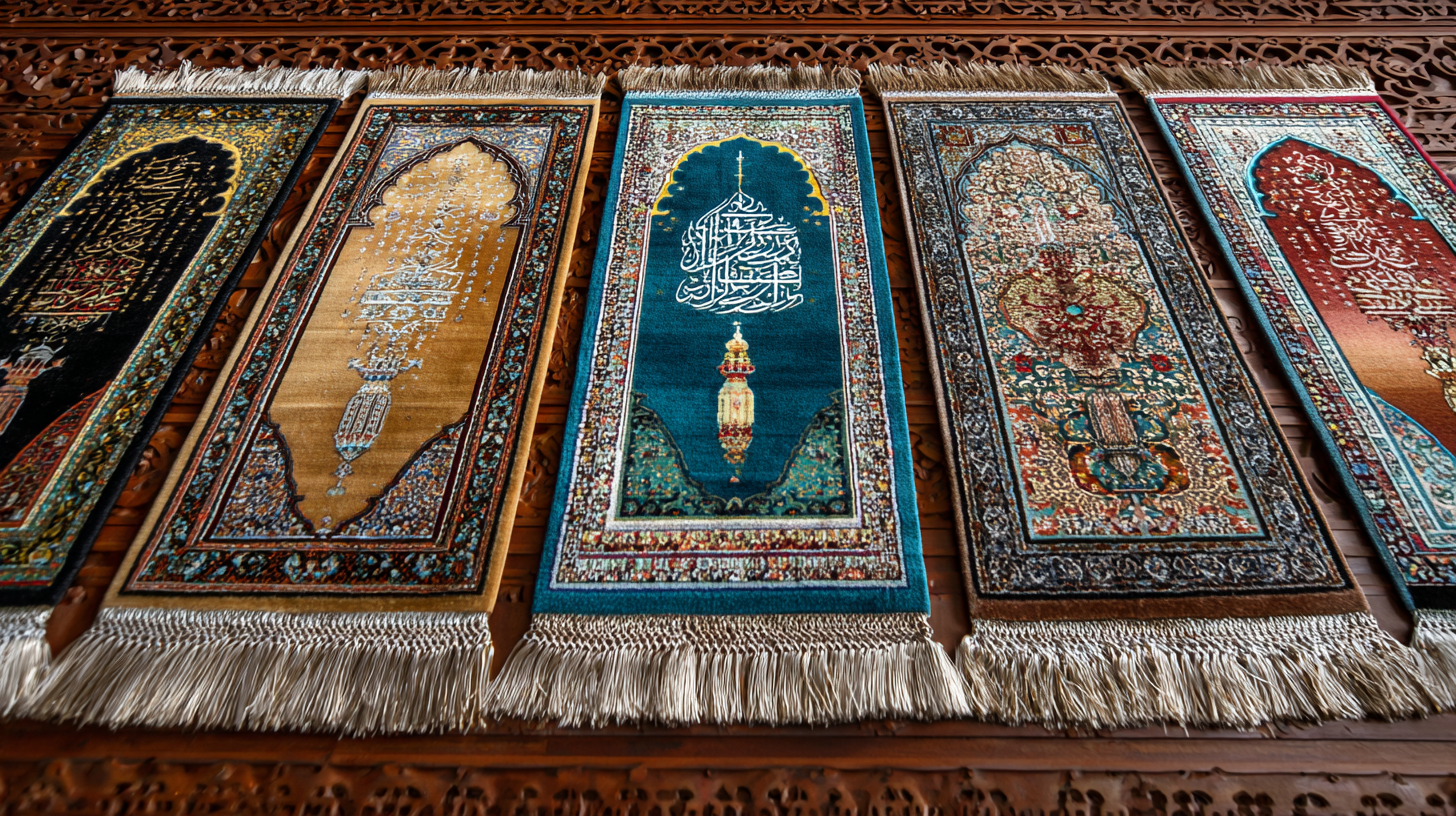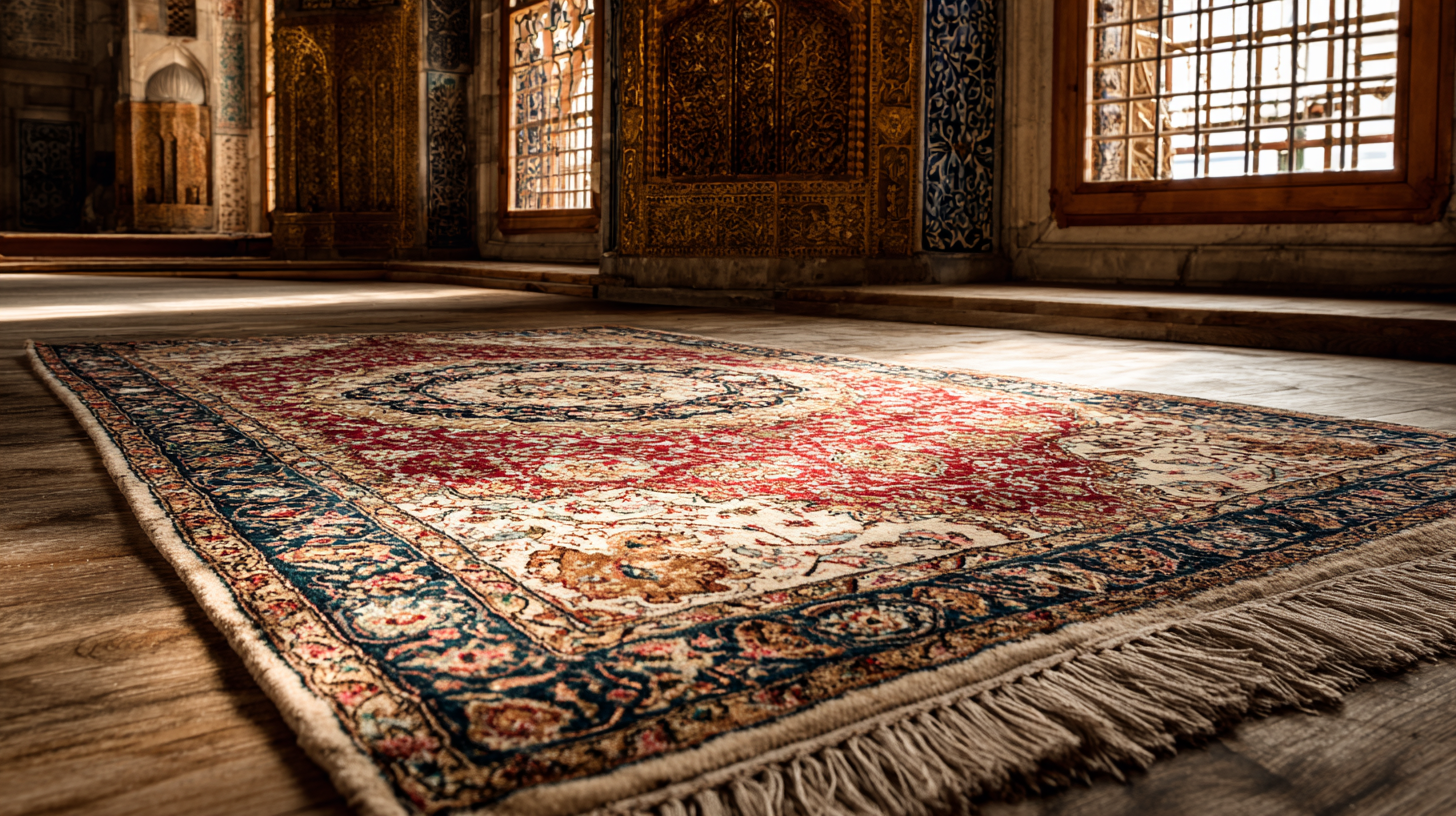
-
Home
-
About Us
-
Products
-
News
-
Blog
-
Contact Us
Leave Your Message

As the global market for Islamic prayer rugs continues to expand, understanding the essential strategies for sourcing the finest products becomes increasingly important. According to a recent market research report by Grand View Research, the global Islamic prayer rug market is expected to witness significant growth, driven by rising awareness of cultural heritage and increasing disposable incomes in many Muslim-majority regions. With an estimated market value projected to reach over $1 billion by 2026, suppliers and retailers must navigate the complexities of sourcing high-quality Islamic prayer rugs that meet diverse consumer preferences.

This ultimate guide aims to provide actionable insights into the procurement process, from identifying reputable manufacturers to understanding the nuances of design and craftsmanship that resonate with global consumers. By leveraging these strategies, businesses can effectively tap into this lucrative market segment while ensuring authenticity and quality in their product offerings.
When sourcing high-quality Islamic prayer rugs for global markets, it's crucial to identify key qualities in potential suppliers. An effective supplier should adhere to established quality management systems, similar to the principles highlighted in recent industry events where emphasis was placed on sustainability and quality assurance. This focus not only ensures that products, such as prayer rugs, meet the needs of consumers but also align with broader market trends advocating for eco-friendly practices.
Moreover, a supplier's commitment to transparency in their sourcing processes is vital. Engaging in partnerships that prioritize ethical sourcing and environmental responsibility allows for a deeper connection with consumers who value sustainability. As demonstrated in various sectors, including those discussed in recent conferences, high-quality development is increasingly linked to responsible business practices. Choosing suppliers who share these values will facilitate better market positioning and long-term success in providing Islamic prayer rugs that are not only beautiful but also responsibly made.

When sourcing Islamic prayer rugs for international markets, several essential factors must be considered to ensure success. Firstly, understanding cultural preferences is crucial. According to the Global Islamic Economy Report 2022, the market for Islamic products, including prayer rugs, is expected to reach $3.2 trillion by 2025. This statistic highlights the growing demand for culturally relevant products that resonate with diverse consumer bases. When sourcing, businesses should prioritize designs and craftsmanship that reflect the traditional aesthetics of various Islamic cultures, from Middle Eastern motifs to South Asian patterns.
Another critical factor is quality and sustainability. A 2021 market research study found that 73% of consumers in Islamic markets prioritize high-quality and ethically sourced products. As awareness of sustainable practices increases, sourcing suppliers who adhere to eco-friendly production methods can appeal to this conscientious demographic. Collaborating with artisans who use traditional techniques can also enhance the authenticity and appeal of prayer rugs, elevating brand perception while supporting local economies. By paying attention to these factors, businesses can successfully navigate the competitive landscape of international prayer rug sourcing.
When sourcing Islamic prayer rugs for global markets, establishing a comprehensive supplier evaluation checklist is crucial. This checklist should assess factors such as product quality, supplier reliability, and ethical sourcing practices. According to a report by Allied Market Research, the global prayer rug market is expected to reach $2.3 billion by 2028, indicating a significant opportunity for businesses that prioritize high-quality products and responsible sourcing.
**Tip: Evaluate Supplier Credentials**
Incorporate a review of suppliers' certifications and quality standards into your checklist. Look for certificates such as ISO 9001, which signifies a commitment to quality management, and other industry-specific accolades. This ensures that suppliers adhere to international quality benchmarks, enhancing the overall credibility of your sourcing strategy.
Another essential criterion is the supplier's capability to meet demand fluctuations. With a projected annual growth rate of approximately 5.9% in the prayer rug market (as noted by Research and Markets), it’s vital to partner with suppliers who demonstrate flexibility in production capacity. This adaptability will help you maintain stock levels amid rising consumer interest.
**Tip: Assess Ethical Compliance**
Include a segment in your checklist that examines the ethical practices of potential suppliers, like fair labor policies and eco-friendly material usage. Ethical sourcing not only enhances brand reputation but also resonates with increasingly conscious consumers. Investing in suppliers who prioritize sustainability can lead to long-term advantages in a competitive market.
When sourcing Islamic prayer rugs for global markets, understanding cultural sensitivities is paramount. The Islamic prayer rug, or sajjada, is not merely a functional item but embodies spiritual significance and cultural identity. According to a 2022 report by Grand View Research, the Islamic textile market is projected to reach USD 32 billion by 2027, indicating a thriving global demand for products that resonate with Islamic values and traditions. For sourcing professionals, navigating this market requires an appreciation of regional customs and practices, ensuring that the rugs are produced, designed, and marketed thoughtfully.

Furthermore, cultural considerations extend beyond just aesthetics; they encompass the ethical sourcing of materials and labor practices. The Muslim Consumers Report from 2023 highlights that 73% of Muslim consumers consider ethical sourcing crucial when purchasing religious items. This suggests that brands must prioritize transparency and sustainability in their supply chains. By engaging with local artisans and adhering to fair trade practices, companies can not only enhance the authenticity of their offerings but also build long-term relationships with the community. Embracing these cultural sensitivities will not only foster trust but also contribute significantly to the brand's success in diverse markets.
Building long-term relationships with prayer rug manufacturers is essential for sustainable sourcing in the global market. According to a 2021 market research report published by Grand View Research, the global Islamic prayer rug market is projected to reach USD 3.45 billion by 2028, exhibiting a compound annual growth rate (CAGR) of 5.4%. This growth presents both opportunities and challenges for buyers who aim to provide high-quality products while ensuring ethical sourcing practices.
Collaborating with reliable manufacturers not only fosters trust but also enables buyers to negotiate better terms and ensure product consistency. A survey conducted by the Islamic Retail Market Report highlighted that 55% of consumers prioritize quality and authenticity in their purchasing decisions. By establishing long-term partnerships, businesses can work closely with manufacturers to ensure that the prayer rugs meet these standards, which is vital in a market where cultural significance and craftsmanship are paramount.
Furthermore, building these relationships facilitates knowledge sharing about sustainable practices, such as responsible sourcing of materials and environmentally friendly manufacturing processes. A study by the Islamic Business Ethics Report indicated that companies that prioritize sustainable sourcing see a 20% increase in customer loyalty. Hence, investing time and resources in cultivating strong ties with prayer rug manufacturers not only enhances product offerings but also aligns with ethical consumerism trends, ultimately benefiting both businesses and communities.